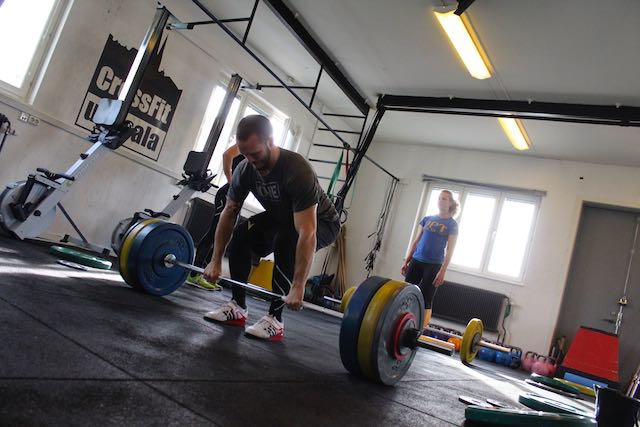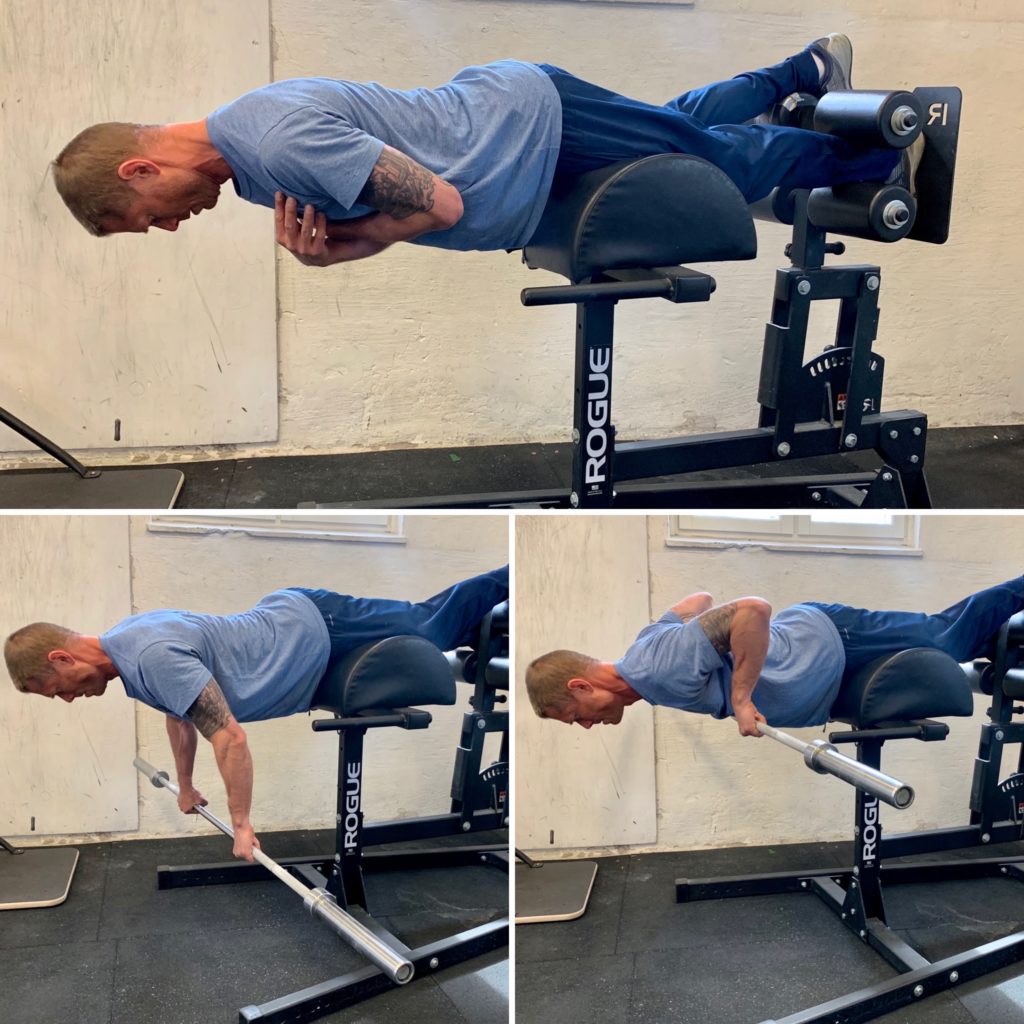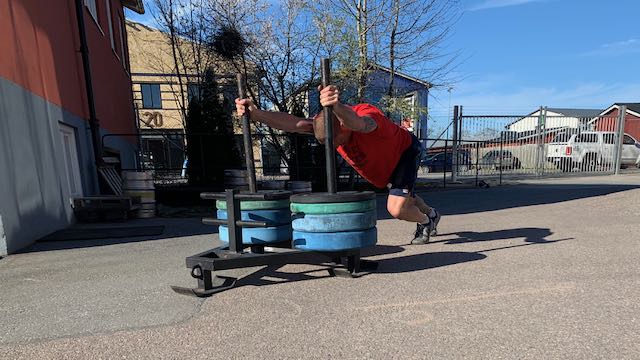“The first step towards getting somewhere is to decide that you are not going to stay where you are.“
J.P. Morgan
The posterior chain is primarily composed of four muscle groups: the calves, the hamstrings, the glutes and the spinal erectors.
The benefits of strengthening the posterior chain in cyclists is not as well established in cycling as in running, but there is no reason to doubt that they are significant. We want to avoid injuries of the like of that hamstring strain that kept four time Olympic gold medalist Laura Kenny on the sidelines in 2017. Secondly, the posterior chain seems to be a substantial contributor to performance.
Hamstring injuries are usually caused by a moment of rapid acceleration, deceleration or intense physical effort and while all too common in running, football, rugby and athletics unfortunately we do experience them in the sport of cycling as well. Knowing of the increased exposure to risk of injury when applying high power to the pedals, it should come to no surprise that they are common in the sprint oriented disciplines. Because of changed behavior between and within muscles when exposed to fatigue, that too could be the cause of a “pulled hamstring”.
While the amount of injuries of the posterior chain in cycling are not to be taken lightly, they are less common than in sports where you absorb higher forces from the ground. This makes performance the more important reason for training the muscles of the posterior chain for cyclists.
When the relationship between the exercise performance and lower limb muscle fatigue in cycling has been explored it has been shown that the two muscles most closely correlated with producing and sustaining high power are the Vastus Lateralis and the Hamstrings. Vastus Lateralis of course, the big muscle of the front legs, would be the usual guess but the significant role of the Hamstrings to the influence of exercise performance might come as a surprise.
Maximum force development takes time, and because time is limited in cycling as in almost all sports, the capability to rapidly develop force is crucial to maximize performance. When we pedal we need to be able to generate as much force as possible, as quickly as possible, before the pushing leg must relax in order to not act against the push of our other leg. Also, both for performance and for injury prevention, we should be as fatigue resistant as possible in order to turn around our pedals as efficiently as possible
The use of Hip thrust, Leg curl, Nordic curl, Deadlift – or the nowadays more popular Romanian deadlift – and Kettlebell swings are commonly used in the gym to train the posterior chain, and while all of these exercises do train the right muscles and do have merits I believe there are even better ones available.

“If risks are known, good decisions require logic and statistical thinking. If some risks are unknown, good decisions also require intuition and smart rules of thumb”
Gerd Gigerenzer
The strategy of embracing uncertainty, to deploy an intermittent decision process rather than to make that grandiose plan that could only work in a fixed and predictable world would tell us to give up finding the perfect solution. One should probably do a little of everything, all the time, as growth and self-organization in an dynamical complex system can be the result of an amplification of change elsewhere in the system. However, as we simply cannot do this, do everything, we still need to decide upon where to start.
So, let’s reiterate the list of criterion for strength work in the gym that we settled on in the Strong legs makes their own path articles, in order to see if we could use those criterions to help us in our decision process.
- Keep movement somewhat similar in movement patterns and stimuli
- Overload as much as possible while satisfying the first rule. Large load means larger neural adaptation and higher percentage of muscle fibers being recruited.
When we are keeping volumes lower and intensity higher, we get what we need from a strength point of view while avoiding being overly tired from too much complementary training. Something that could render us unable to do well on the field where that important true specificity is to be found. If we’d like to keep volume low we’d be smart to stick to few, but efficient exercises.
We could get some help to discard the exercises that are not efficient enough by examining academic studies that has been researching the muscle level activation performed with different exercises. From doing that we seem to learn to favor the Romanian deadlift and the Glute ham raise/Nordic curl rather than the leg curl and good morning.
We have more to consider! To assist the rate of force development and fatigue resistance, I would like to add the following to the list of criterion:
- We should prefer exercises that increase our ability to generate force, quickly, and should avoid exercises that negatively impact this capability
- Seek to improve strength endurance sufficiently in order to sustain power and decrease the risk of injury

“Faster, Faster, until the thrill of speed overcomes the fear of death.”
Hunter S. Thompson
When a muscle is not activated, it is relaxed. There is slack in both the muscle and tendon. Before they can generate movement of the body it first has to take up the slack and go “tense”. Some athletes struggle to produce this tension and removal of slack quickly (early phase rate of force development) and it can hinder their performance.
In many athletic movements, such as sprints, changes of direction, throws, kicks, etc, the time which force can be generated against the ground or an object is lower than 250 milliseconds. If we are inefficient at going from slack to tense this can take up to 100 milliseconds of that time without even accomplishing movement, something that could severely hindering performance. This is also likely the case in cycling, where the optimal pedaling rate for high power sprinting seems to be somewhere around 120 revolutions per minute. 120 rpm’s means 500 milliseconds per cycle, where about half of that is comprised of leg extension and the rest needed to finalize relaxation in order to let the other leg take its turn.
Strategies to reduce muscle slack is to create pretension using co-contractions, using counter movements or by adding load. This is, for instance, why a rebounding “counter movement jump” is always higher than a “squat jump” starting from a static bottom position. Better results in training can be deceiving, as practicing counter movements leads to decreased ability to produce co-contractions without the counter movement (which most sport lack time to perform on the field, and which does not exist in cycling).
Observe that claims of adding load to a movement with the use of barbells or dumbbells should be questioned, simply because of it’s potential to reduce muscle slack as it may not challenge the body to learn to develop proper pre-tension with the use of co-contracting muscles.
There are other benefits of high overload of course, but it is important to search for a balance between the possible negative effects on pre-tensioning abilities and the positive effects force production. This balance may well be carried out by emphasizing movements from a “dead” start rather than with an eccentric movement. Seemingly this could make us prefer, for instance, the regular Deadlift over the Romanian deadlifts and the Nordic raise.
For the high power ballistics movements such as jumps and throws this means to include variations, possible more often than not, from static positions even though it likely means less impressive results in the training hall.
Force production is linked to related movement patterns, not only in similar physical structure but also in similarity of sensory patterns (seeing and feeling) and intention. This means that we should, if we can, try to get some similarity of the end, and if possible, start positions when overloading a sport specific movement in the gym.
I would argue that all barbell versions of the Deadlift as well as the Nordic curl, despite highly activating the right muscles, lack in this area for all movements performed on a bike regardless if it’s in or out of the saddle. I would probably argue the same for most other sports as well, and I would want to propose the Death march as an alternative that should be strongly considered.
Regardless of being performed by “from the top”, lowering the weights, it has a finishing position similar to both cycling and running, and when used with a dead start it also has a similar start position. Adding to this is that it, similar to most sports, offers actual forward movement rather than standing still. This could very well offer better transfer into the field of play while still be possible to overload with quite large loads.
When it comes to injury prevention to fatigue resistance the slow negative provided by the Romanian deadlift or the Nordic curl are both viable solutions, but as we recognized, possibly with a cost when it comes to explosiveness.
It has been proposed by the same dutch scientists that popularized the concept of muscle slack, Bas Van Hooren and Frans Bosch, that contraction intensity may be the main stimulus for improvements seen with negative training and that isometric training – when the muscle doesn’t noticeably change length and the affected joint doesn’t move – could therefore also be highly effective when performed at a high contraction intensity.
Further, isometric exercises permits us to control at which muscle-length they are performed, opening up the potential for them to be performed at a sport specific length or around the optimum length where higher forces than a lowering only exercise can produce. This could allow for more adaptation with less overall volume, leaving more energy to hit the sport specific work.
Van Hooren proposes integrating progressively harder single leg holds, around 10 seconds of work performed for three sets, going from bodyweight only into slightly weighted into upper body rows and I have used this progression successfully.

Dealing with the radical uncertainty of biological systems it is probably wise to hedge our bets with multiple types of exercises, as we do not know what will be pushing the system into that state of increased performance and injury sustainability. Therefore, for athletes with two days of strength training per week I tend to program the Death march and the isometric holds on one of those, and to do a Deadlift variation and Nordic curls for the other session.
- “Pedaling Performance Changing of Elite Cyclists Is Mainly Determined by the Fatigue of Hamstring and Vastus Muscles during Repeated Sprint Cycling Exercise”, https://www.hindawi.com/journals/bmri/2020/7294820/
- “Muscle activation during various hamstring exercises”, http://www.oliverfinlay.com/assets/pdf/mcallister%20et%20al%20(2014)%20muscle%20activation%20during%20various%20hamstring%20exercises.pdf
- “Preventing hamstring injuries”, https://www.researchgate.net/publication/324835159_Preventing_hamstring_injuries_-_Part_2_There_is_possibly_an_isometric_action_of_the_hamstrings_in_high-speed_running_and_it_does_matter
- “The Single-Leg Roman Chair Hold is More Effective than the Nordic Hamstring Curl in Improving Hamstring Strength-Endurance in Gaelic Footballers with Previous Hamstring Injury”, https://www.researchgate.net/publication/323465902_The_Single-Leg_Roman_Chair_Hold_is_More_Effective_than_the_Nordic_Hamstring_Curl_in_Improving_Hamstring_Strength-Endurance_in_Gaelic_Footballers_with_Previous_Hamstring_Injury
